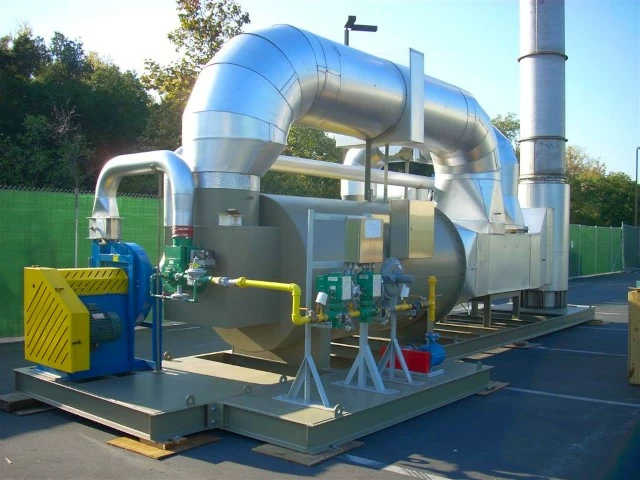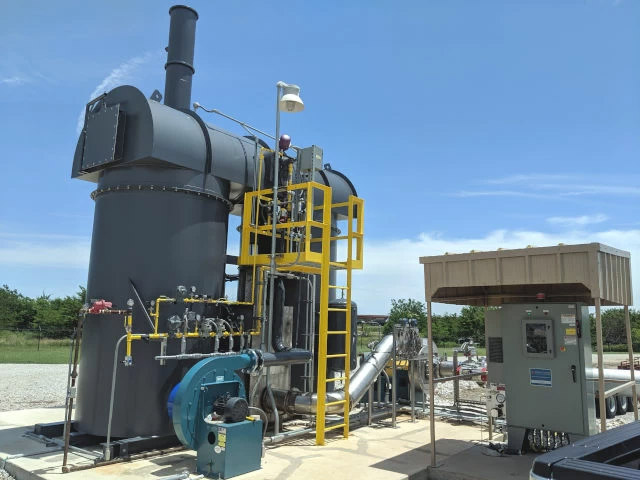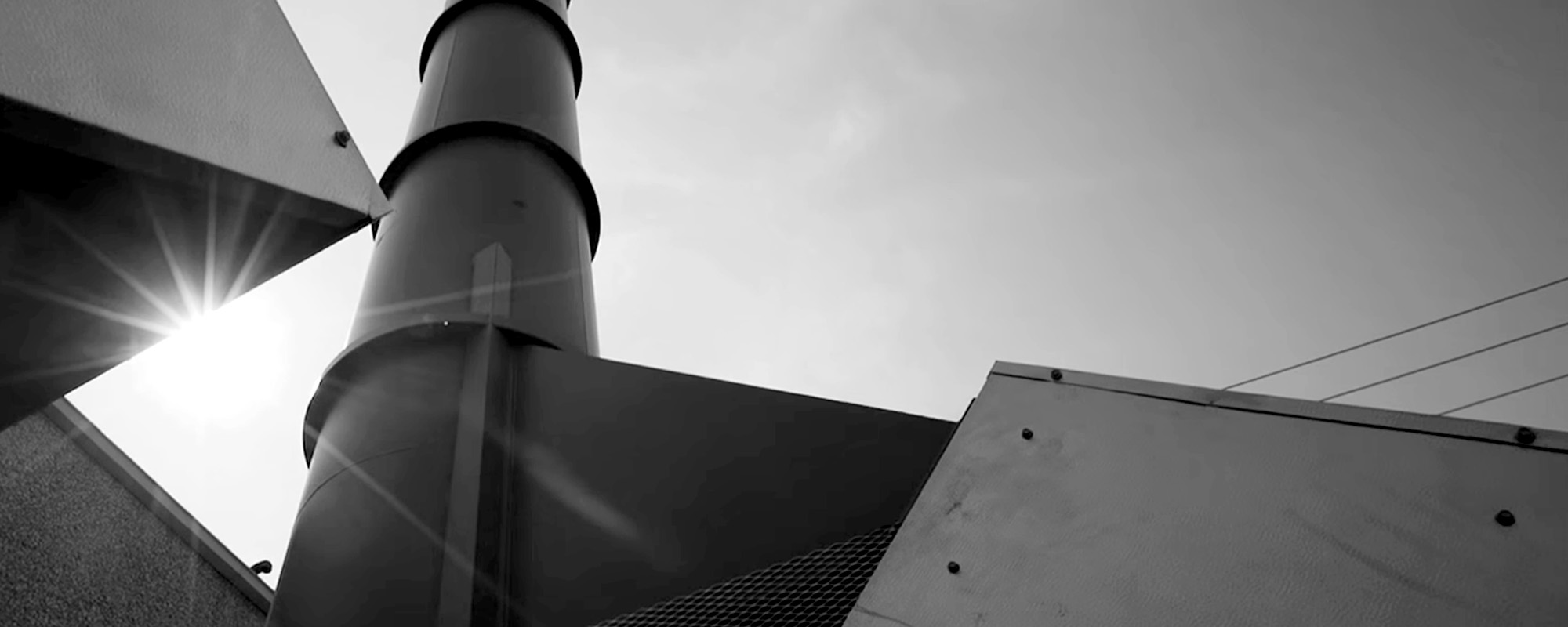Catalytic Oxidizer (RCO) vs Regenerative Thermal Oxidizer (RTO)
Catalytic Oxidizers and Regenerative Thermal Oxidizers are efficient systems for air pollution control. Both hold many benefits, but the right solution for your facility will need to be determined by business and operational needs. While RTOs have historically been a popular choice, they are often misapplied and/or applied in situations where a catalytic oxidizer may be the better (and more sustainable) option.
Below we detail the different aspects of each technology as well as provide a comparison chart to help you as you consider the smarter choice for your facility.
Catalytic Oxidizers (RCO)
Catalytic Oxidizers, frequently abbreviated as CatOx, are most appropriate for applications containing low concentrations of Volatile Organic Compounds (VOCs). They can maintain continuous steady-state operating conditions for nearly indefinite periods while having minimal effect on the overall process. Catalytic Oxidizers are great options for industrial applications such as Chemical Manufacturing, Pharmaceuticals, Ethylene Oxide Sterilization (EO, ETO), Odor Control, Engine Testing, Food Processes, and Coating & Laminating.
Regenerative Thermal Oxidizers (RTOs)
Regenerative Thermal Oxidizers are suited for applications having high waste stream flow rates accompanied by low VOC concentrations and virtually no particulates or condensables. Their design allows for very high air volumes of above 5,000 SCFM, and some individual systems have the capability of handling more than 50,000 SCFM. RTOs are especially effective for Paint Booth applications, Coating Processes, Automotive applications, Ethanol Production, Pharmaceuticals and other manufacturing processes.
Comparison Chart
| Catalytic Oxidizer (RCO) | Regenerative Thermal Oxidizer (RTO) | |
|---|---|---|
| Ownership Pros |
Quick start-up Due to the lower operating temperatures, CatOxes require less gas since oxidation occurs at much lower temperatures than other thermal oxidizers Less metal fatigue because of low operating temperatures |
When treating low VOC concentrations, RTOs allow for high thermal efficiencies (95%+), meaning lower fuel costs In some situations, RTOs can sustain acceptable combustion temperatures without supplemental fuel |
| Ownership Cons | CatOx have lower thermal efficiency for very low VOCs |
RTOs have high maintenance costs due to the many moving parts requiring regular inspections and servicing Less than ideal for batch / intermittent processes due to the cooling of the system |
| Maintenance and Reliability - Pros |
Automated controls limit operator interface Fewer internal moving parts means less maintenance necessary Catalyst modules are easy to replace |
Automated controls limit operator interface |
| Maintenance and Reliability - Cons | Condensables or particulate poisons can de-activate or foul the catalyst |
Higher maintenance requirements and greater reliability issues due to the moving hardware (valves/dampers, seals, etc.) wearing out from high-impact operations Worn seals and media hotspots often leads to fugitive emissions (valves, seals, plugs) High-temperature metal fatigue Condensables or particulate can plug media and quickly hinder system performance Potential extended downtime for media or chamber issues |
| Efficiency (DRE and Energy) - Pros |
For moderate/low VOCs, minimal supplemental gas is needed (may be auto thermal) Can use electric vs gas due to lower chamber temperatures |
RTOs can often achieve thermal efficiencies of 95% or higher Can provide consistent destruction removal efficiencies (DRE) of 95-99% For high air flows and low VOC concentrations, RTOs provide much lower energy costs than other TO systems |
| Efficiency (DRE and Energy) - Cons | DREs above 99% are difficult to achieve due to cycling and valve leakage (difficult to maintain overtime) | |
| Operating / Process Conditions - Pros |
Can handle variation in VOC load (bypasses Heat Exchanger) Steady state with minimum effect on process |
Effective for large flows of 5,000 to greater than 50,000 SCFM |
| Operating / Process Conditions - Cons | Cannot handle any poisons, particulate, or condensables; these will hurt the catalyst |
Difficulty handling high VOCs - sustained exposure to even a small amount can overtemp the system’s chamber Constant valve cycling can affect process exhaust |
Frequently Asked Questions
As you can see, both catalytic and regenerative thermal oxidizers have pros and cons associated with cost, maintenance & reliability, DRE & energy efficiency, and operating/process conditions. The right solution for your process depends on many business and technical factors… one system does not fit all applications!
Catalytic oxidizers are lighter than RTOs due to the significant mass of media RTOs require. They provide the option to install on roofs or mezzanines without the structure and footings that an RTO would require.
Factors to be considered in assessing overall lifetime cost include initial installed capital cost, ongoing operating cost, maintenance, and reliability.
The initial capital cost for the equipment is generally similar and is dependent on the flow of the exhaust to be treated. Installation cost for electric catalytic oxidizers is typically lower than RTOs as RTOs tend to be much larger and heavier than similarly sized catalytic oxidizers. This potentially limits where the RTO may be placed and require additional foundation support. However, very large electric catalytic oxidizers require access to high electric loads at the site.
Ongoing operating cost depends on several factors including the pollutant to be treated, the required destruction efficiency, the amount of potential energy in the stream, and the cost of electricity compared to gas at the site. Each application should be evaluated to understand the estimated operating cost.
Maintenance and reliability are difficult to predict but very important considerations. When properly designed for industrial use, both types of oxidizers have good on-stream time and are capable of operating 24/7 for long periods of time. Electric catalytic oxidizers have much fewer moving parts compared to an RTO. Both systems have fans that operate continuously. However, an RTO has diverter valves, which shift frequently to alter the direction of flow through the system. These valves and drives create continuous pressure and temperature fluctuation and are subject to significant wear and tear. Additionally, RTOs operate at much higher temperatures which stresses the materials of construction and may lead to hot spots. Both systems are subject to fouling or plugging if placed in the wrong application.
One main difference between electric catalytic oxidizers and RTOs is the source used to heat the incoming air. RTOs mainly use natural gas for heating, due to the higher temperatures required, while electric heating elements are used for the Electric CatOx. Depending on the resources used to generate electricity, electrification can potentially reduce carbon dioxide (CO2) emissions. In the United States, over 40 percent of electricity is currently generated using zero-carbon fuels such as nuclear energy and renewables.¹
¹Cleary, K. (2022). Electrification 101. Resources for the Future. Retrieved September 27 2022 from https://www.rff.org/publications/explainers/electrification-101/



